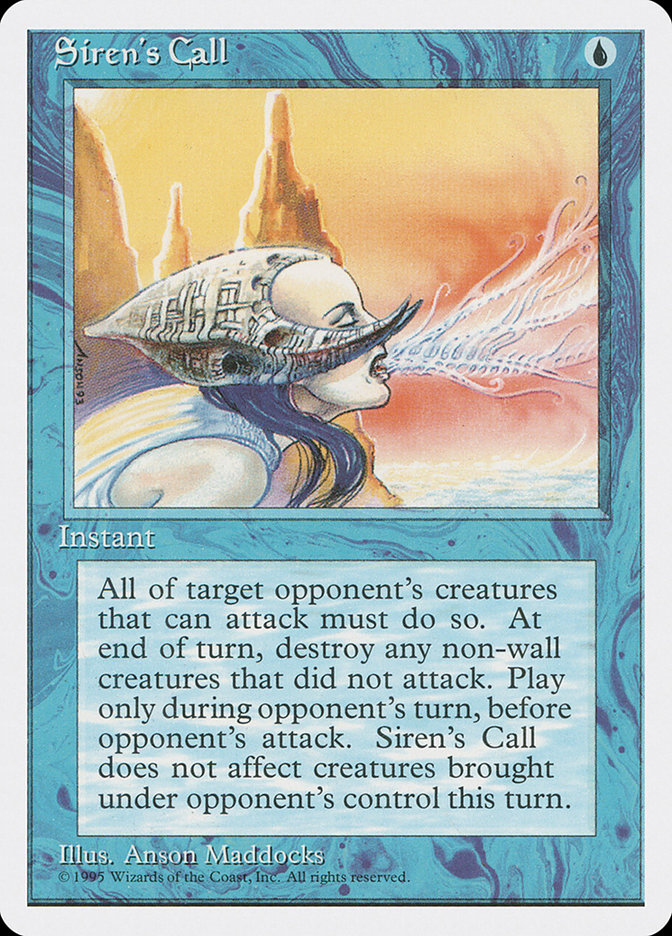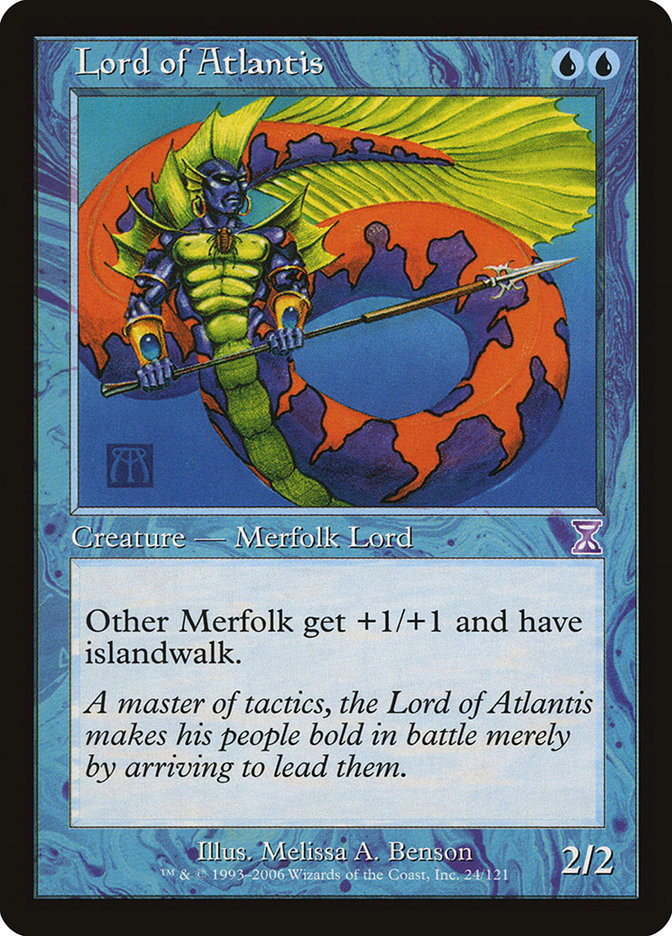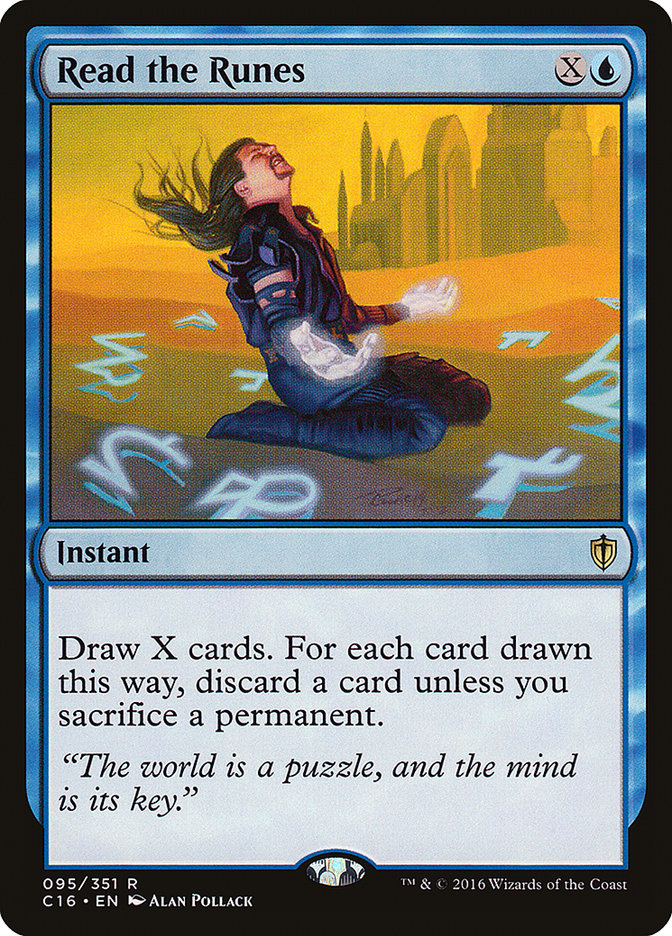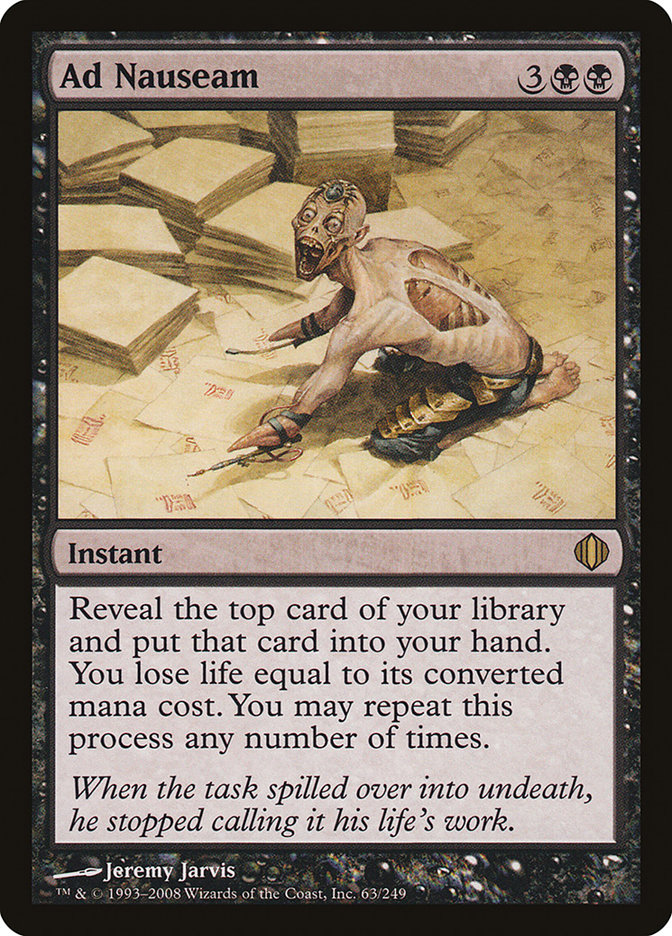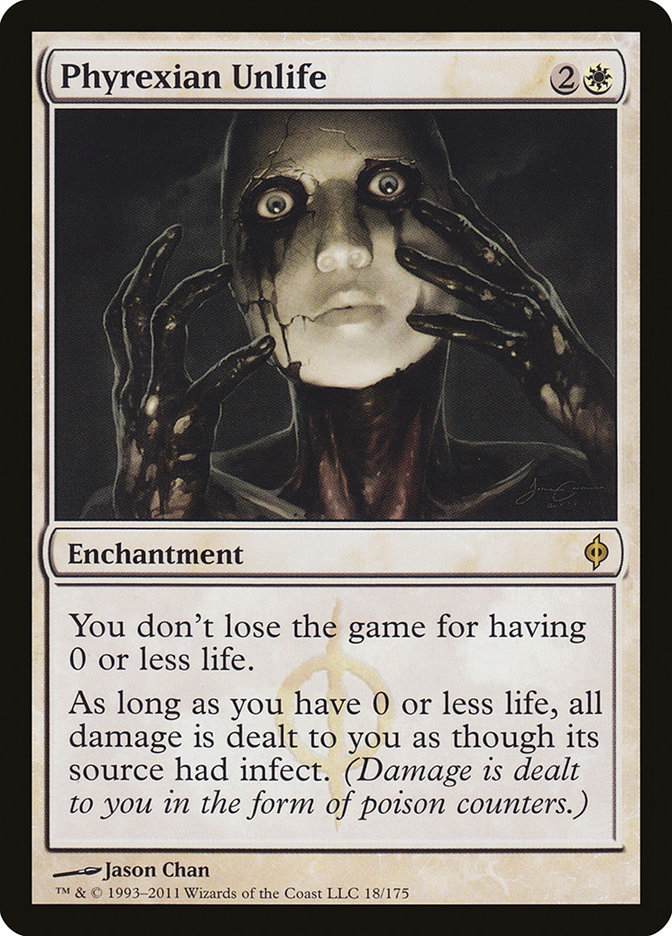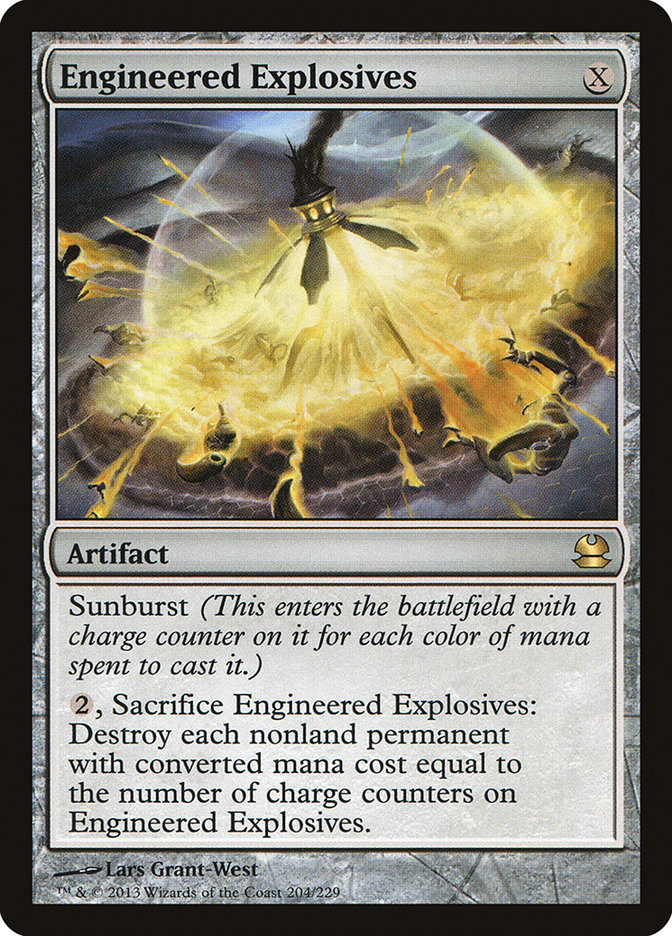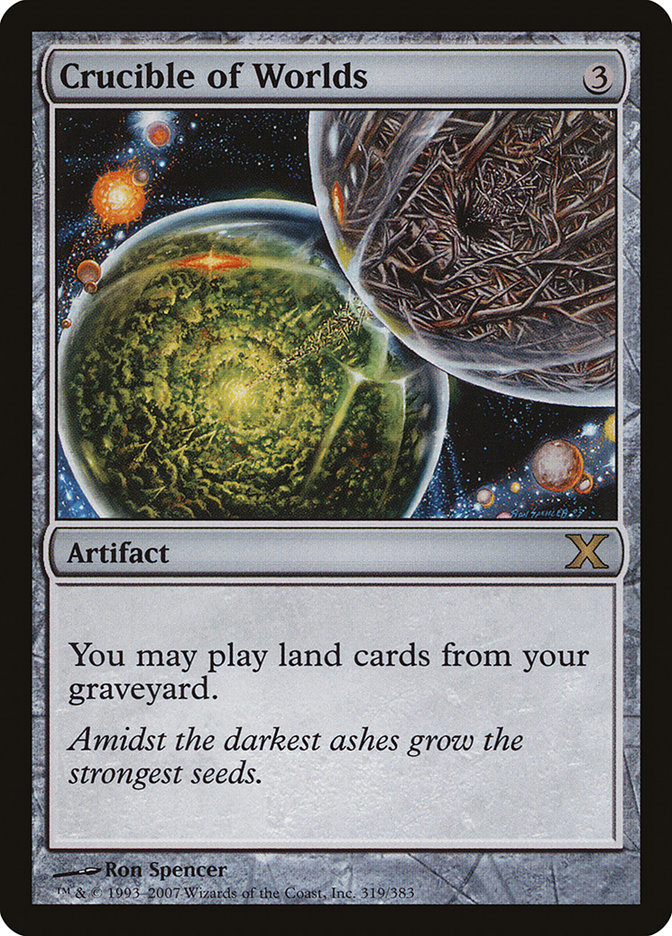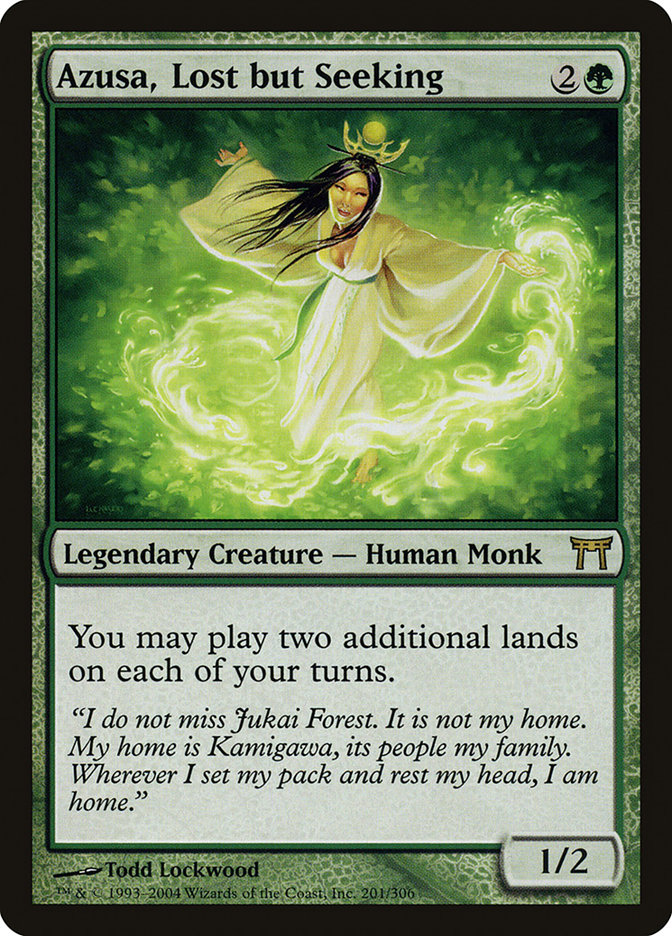I may have been playing a Standard Grand Prix in New Jersey last weekend, but on the ride home my attention was on Modern. Standard is stale and everyone knows it, but #SCGDFW had the promise of fresh decks in a relatively unexplored Modern metagame.
But soon my thoughts were wandering, the way they always do, and I started thinking about why Magic players love decklists so much. For years the common refrain has been most people skim the article for a decklist and that’s it. And as much as we like to deny it, it’s mostly true, which I know because for years I was one of those people.
Of course we all know that reading the explanation of card choices and other analysis is immensely helpful in understanding the list itself, but there’s something about those 75 cards, arranged neatly into columns, that sucks us in, even if succumbing to the siren’s call ends with a brutal crash into a rocky shore.
Tournaments with hours upon hours of gameplay are reduced to a mere eight, or at most 64, decklists for later consumption, as though those 600 pieces of cardboard could possibly contain a perfect representation of the thousands of matches that are played over the course of a large tournament.
Tournament results are necessarily imperfect, but they are the best data we have and sometimes you have to work with what you have, even if it’s not ideal. So today I’m going to wax poetic a little more about the allure of decklists in general and then take a look at the results from Dallas last weekend so you can prepare for your next Modern tournament.
The Easy Answer
As I noted earlier, readers scrolling through an article in search of a decklist has been common, if not the norm, in Magic since the beginning. But presumably people who are dedicated enough to read strategy articles for Magic, and especially those who pay for them, are keen enough to put in the necessary work to improve.
So the obvious answer is that Magic players, as a group, are fairly lazy. They want the fish handed to them after they spend the day lounging at the beach so they can then take that fish to their local store and beat their opponents over the head with it.
…I think that metaphor got away from me a little. Don’t go around slapping people with actual fish you get from strangers at the beach.
If you do, at least make it a good fish.
Back to your regularly scheduled programming.
There is some degree of shortcutting in skipping straight to the decklist. Your regular FNMer may not be looking to devote hours upon hours to perfecting their deck, or more likely may not be able to. Most writers are part of a small class of devoted competitive players, while most players are simply looking to improve a little and win some packs at their local store as they enjoy their hobby. This isn’t a failure on their part, simply a reality of their relationship to Magic, and it’s our job as content producers to cast a net for as wide an audience as possible, in terms of both helping players improve and providing a source of entertainment.
It’s all too easy to assume that you personally are representative of the community at large, but it’s often not the case. Writing has certainly helped me take a step back from my own bubble and see how diverse Magic is in the ways people engage with and enjoy the game. Finding and analyzing new decklists is about as universal a pastime as Magic players have.
A Secret Language
And just why are decklists so universal? Because they are the common language of Magic players. Very few of us dabble with the abstract concepts of Magic theory on a regular basis, even down to seemingly basic concepts like a mana curve. But everyone can look at a decklist and get a sense for what that deck is trying to accomplish. They can recognize an aggro, combo, or control deck, even if they aren’t intimately familiar with those terms.
Funny enough, the theoretic terms are more recognizable outside of Magic, since they don’t necessarily depend on an understanding of how a planeswalker functions or the exact text on Heart of Kiran. But to a Magic player, all the information you need is right there in the decklist itself. With the language of decklists, we can communicate with each other much more efficiently and effectively than we otherwise could.
Yes, hearing an explanation of the choices that led to that list are quite helpful and eliminate some of the guesswork in figuring out why the last few flex spots are the way they are, but in theory all of the testing data and theorycrafting comes out in the final product, and that makes decklists so much more tantalizing.
From this lens, decklists are an incredibly dense source of information that we have to unpack and decode, like a puzzle. And I don’t think I have to go into detail explaining that Magic players like puzzles. Sure, you can read about the list and understand it completely, but that takes away the fun of solving the puzzle on your own. For some, the goal is simply to get to the solution, but for others, that’s akin to skipping to the end of the book and spoiling the ending.
Whatever your preference, the decklist takes center stage. After all, we’re only learning so we can potentially have a better list for our next game, whether that game is at a sanctioned tournament or the kitchen table.
The Aesthetics of Decklists
Have you ever considered how a decklist looks?
Creatures (19)
Planeswalkers (2)
Lands (24)
Spells (15)

Have you found that, as you improve, you get a better sense for when a decklist looks off, even if you can’t exactly articulate why? Sometimes the numbers just don’t look right and sometimes they look perfect, even if they’re just a list of fours, threes, twos, and ones.
Creatures (26)
- 2 Avalanche Riders
- 1 Twisted Abomination
- 3 Simian Spirit Guide
- 4 Street Wraith
- 2 Faerie Macabre
- 4 Fulminator Mage
- 2 Pale Recluse
- 4 Monstrous Carabid
- 4 Deadshot Minotaur
Lands (19)
Spells (15)

Decklists have a certain aesthetic appeal once you’ve been playing long enough. Once you have a strong base, you can look at a list and see how the cards fit and work together to form something that is more than a collection of parts. There’s a certain elegance to a well-crafted list. Everything works in concert with nary a wasted slot.
It’s similar to a sculpture. You start with a rough idea, a block of marble. Slowly you chisel away, tuning your list, shaping your block. At the end, what emerges is a work of art where once there was just raw material. A great decklist evokes the same response and has the same beauty for those of us, the Magic players, who can appreciate it.
Importantly, the end result is also a reflection of its creator and its place in time. Decklists are a living history of Magic. Yes, Tinker is overpowered to the point of brokenness, and I can explain why in theoretical terms, but it won’t be as evocative as looking at and playing with Jon Finkel’s iconic, World Championship-winning decklist.
Creatures (9)
Lands (21)
Spells (30)
- 4 Brainstorm
- 4 Grim Monolith
- 4 Phyrexian Processor
- 1 Mishra's Helix
- 1 Crumbling Sanctuary
- 4 Tinker
- 4 Voltaic Key
- 4 Thran Dynamo
- 4 Tangle Wire
Sideboard

It’s a bunch of fours and ones, no calculated trimming here or there to fit something else in. It’s brutally efficient at what it does but no less appealing for it.
Decklists as a Predictive Tool
No matter how much I enjoy the aesthetic appeal of decklists, as a professional Magic player, they are first and foremost a tool. The information from tournament results may be small in scope, but it’s the best data we have for figuring out how the metagame is going to shift moving forward. So let’s take a look at the winning decklists from Dallas and see what we can glean. You can find those decklists here.
Here are the takeaways that I see:
Death’s Shadow has cemented its place as Modern’s best deck.
This likely isn’t a surprise to anyone, as it’s been the best-performing deck in the format since Grand Prix Vancouver. What’s important to note, however, is that it has continued to perform well despite having a significant target on its back. Plenty of decks rise and fall with the metagame, only emerging when the conditions are right. But the best decks are powerful and resilient enough to perform in any conditions. Death’s Shadow appears to be the latter.
As its place is only further cemented, Death’s Shadow will start to warp the metagame around it, pushing its best matchups out of the metagame until it has no one left to prey upon. To look at the decks can potentially capitalize on such a shift and compete in a Death’s Shadow-dominated metagame, check out Gerry Thompson’s articlefromlastweek.
It’s also important to look at how the lists themselves are evolving. There isn’t much here except for the declining numbers of Tarfire. Whereas previously we saw three to four copies as standard, the two lists in the Top 8 have two to three copies. If that trend continues, you may be able to effectively sneak more two-toughness creatures into your decks than before.
Ad Nauseam is the best combo deck in the format.
By his own admission, Chris VanMeter has been having an affairwithAdNauseam and for good reason. It hasn’t dominated any events with a ton of top finishes at once, but it’s more consistently placing well than any other combo deck right now. The choice between Spoils of the Vault and Peer Through Depths is still an open question, but this deck is a force to be reckoned with either way, and if you haven’t added it to your gauntlet, yet you’ve made a mistake.
Engineered Explosives is now stock in Bant Eldrazi.
This has also been going on for a couple of weeks now, but it’s unclear whether it was a brief trend or something more permanent. Engineered Explosives is a great card against Death’s Shadow, so with that deck cemented at the top of the format, so has the answer cemented itself into the maindeck of one of Death’s Shadow’s chief competitors. Three copies in Kaider Sheen‘s list are a strong statement that this is a card I want to draw quite often. Don’t let this catch you by surprise and look to diversify your curve if possible so you aren’t as vulnerable.
Todd Stevens is a mad scientist.
Creatures (27)
- 1 Azusa, Lost but Seeking
- 2 Birds of Paradise
- 4 Tarmogoyf
- 4 Noble Hierarch
- 4 Knight of the Reliquary
- 2 Scavenging Ooze
- 3 Voice of Resurgence
- 4 Courser of Kruphix
- 1 Tireless Tracker
- 2 Renegade Rallier
Lands (23)
Spells (10)

Maindeck Crucible of Worlds and Azusa, Lost but Seeking? That’s not thinking outside the box, it’s thinking outside of this planet. I’m sure Todd will bring some detailed insight about his latest monstrosity later this week, but I wanted to offer my thoughts on it.
Renegade Rallier is a powerful Magic card and pairing it with Tarmogoyf for maximum power from its ability is the best route for it, in my opinion, so check that off the list. Second, Path to Exile is the best removal spell against Death’s Shadow, so we’re off to a good start.
The land destruction package is interesting for a deck that has historically struggled with Tron. Ghost Quarter is certainly great for a deck with Knight of the Reliquary that also wants to trigger revolt. I’m not sold on maindecking the other components, but at the very least they form a nice sideboard plan in an otherwise bad matchup. That said, I’m not at all surprised to see Todd Stevens show up with a couple of wacky singletons in his deck.
Is improving the Tron matchup enough to make this deck a contender? That’s the big question for this week as the metagame coalesces around Death’s Shadow, Burn, Ad Nauseam, Bant Eldrazi, and various flavors of Tron. Regardless of this deck’s staying power, Todd’s ability to succeed in Modern with offbeat decks is impressive.
***
We’ll never know exactly what happened for these to be the successful decks last weekend. Maybe some of them were particularly lucky in certain spots, but in reality you have to get a little bit lucky to succeed in large tournaments. As imperfect as they are, decklists are a treasure trove of information. Learning to unlock their secrets as well as appreciate exactly what they are is part of all of our evolutions as Magic players, all of us searching for that one moment when we step back, aglow in the beauty of our masterpiece, only to have someone look over our shoulder and say:
“What in the world is a Tireless Tracker?”


